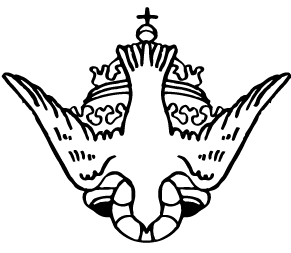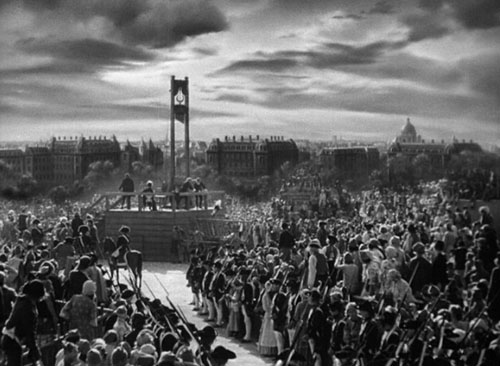The Colloquium on Dignitatis Humanae held in Norcia over All Saints 2015 presented all the main orthodox views on the document. By orthodox I mean that no one accepted that an authoritative and binding document of the Church’s magisterium could overthrow the teaching of a previous document of the same or a higher authority. There was of course plenty of room for discussion as to the relative authority of the various texts in question. Broadly there were two approaches to the problem the playing down of the extent or level of the authority of Dignitatis Humanae or the construction of the text is such a way as removed the apparent contradiction with the previous magisterium. Fr Brian Harrison, Fr Dominique and Fr Basile were ‘constructionists’ while John Lamont and James Bogle were ‘minimalists’. While nether man exuded approval for the Declaration, John Rao and Roberto de Mattei’s approach was historical. Thomas Pink really stands alone with his, what might be called, ‘gordian’ solution. Consensus was tricky especially (as so often happens) as the time for discussion at the end was too short (mea culpa). Of course, the minimalist contention does not touch per se upon whether the document can be reconciled with the preceding magisterium only on whether it needs to be. It might be that it does not need to be and yet it can be. However, it would be fair to say that the minimalists were both unconvinced that it can be.
Although there were subtle differences between the readings of the three constuctionists their approaches were compatible and in the case of the two Frenchmen very similar. One area in which Frs Basile and Dominique seemed to part company was the question of conscience. In section 3 of the Declaration it asserts “In all his activity a man is bound to follow his conscience in order that he may come to God, the end and purpose of life. It follows that he is not to be forced to act in a manner contrary to his conscience. Nor, on the other hand, is he to be restrained from acting in accordance with his conscience, especially in matters religious.” This may be taken as an explanation of the earlier line “no one is to be forced to act in a manner contrary to his own beliefs” in the most authoritative sounding passage of the Declaration. The role of conscience is crucial because, while the Declaration maintains that immunity from coercion persists even for those whose err in their beliefs, it makes no mention of those who deliberately act contrary to their beliefs. A formal heretic ex hypothesi acts contrary to his conscience not merely on the basis of an erroneous conscience. Thus the punishment of formal heretics by the temporal power in former times would seem not to fall under the censure of the Declaration (whether by accident or design).
A similar question arises in regard to the meaning of the term ‘religion’. Section 4 of the Declaration states,
Provided the just demands of public order are observed, religious communities rightfully claim freedom in order that they may govern themselves according to their own norms, honour the Supreme Being in public worship, assist their members in the practice of the religious life, strengthen them by instruction, and promote institutions in which they may join together for the purpose of ordering their own lives in accordance with their religious principles.
It would seem from this passage that ‘religion’ only extends to monotheism. While the ability to diagnose formal heresy is beyond the power of the state and thus the scenario arising from the construction of the phrase “in accordance with his conscience” arises only in the context of a Catholic state recognising the jurisdiction of the Church, the ability to recognise idolatry and to proscribe it belongs to reason alone. The constructionists have on their side, therefore, the claim that the Declaration when read correctly allows for the punishment of formal heresy (as identified by the ecclesiastical tribunal) in a Catholic state and of idolatry in any state. All it does not permit is the forcible conversion of the un-baptised to Catholicism or the proscription of erring monotheism among them. Neither of these prohibitions are novelties.
John Lamont, on the other hand, might well deny that the latter is no novelty. In this regard the October 598 letter of St Gregory the Great to Fantinus, Administrator of Palermo in which St Gregory Dialogos asserts that the removal from Jews of their places of worship is “contrary to justice and equity” assumed a particular importance. John Lamont also alleges that the weight of patristic authority is behind an inherent right on the part of the state to supress religious error. This claim brings him up against the gordian position of Thomas Pink that the Declaration refers only to the abstract competence of the state qua state and so does not touch upon the powers of the state as instrument of the Church. Pink’s case for this is very strong both in terms of the discussions and statements surrounding the drafting of the text and the fact that Paul VI and a significant proportion of the council fathers were Maritainians and did indeed demonstrably deny such competence to the state qua state. The problem posed for this interpretation by Lamont is that it would seem that the fathers do indeed attribute such competence to the civil power and so the gordian solution merely exchanges one error for another.
It seems to me that this objection to Pink is easily overcome by reference to St Augustine’s doctrine in De Civitate Dei. It is part of the essence of a true polity that it worship the one true God in the manner which He has appointed. Every state is thus obliged to discover the true religion and embrace it corporately. As it happens the true religion is Catholicism and part of the revelation upon which Catholicism is founded is the reservation of judgement in religious matters to the spiritual power. The state does indeed have of its own nature competence in religious maters but the only true polity without qualification is the City of God, the Catholic Church. It is through adherence to the Catholic Church that temporal polities receive their perfection as human societies. As Pink often emphasises, Leo XIII teaches that the proper relationship between Church and state is that of soul and body. It is the nature of the body to be united to the soul. Without the soul there is no human body. Thus it is part of the essence of the state to coerce in religious matters but in this order of providence it is also part of the essence of the state to exist within the Catholic Church; a civil power that is not united to the Church thus lacks de facto this right that belongs in the abstract to the state. As St Augustine says “there is no justice save in that commonwealth whose founder and ruler is Christ” and “kingdoms without justice are but criminal gangs”.
The error of the Maritainians lies not their analysis of the competence of the state in abstraction from the Church but in their contention that the realisation of this separation in reality could be legitimate or desirable. This contention is not made in the Declaration however much its authors may have assumed it. For the body when separated from the soul does not become some other sort of body it perishes and decomposes. There are other living bodies than human ones but the human body cannot turn into them directly. It must first be slain and then devoured. Thus the states of Christendom had to be overthrown by revolution in order to be transformed into the bestial latrocinia of secular modernity (see: Daniel 7).
With a healthy dose of St Augustine there was therefore, it seems to me at least, a virtual if not an actual consensus underneath the great diversity of views expressed at the colloquium. Whether the participants would agree or not is another question entirely.
 INSTITVTE
INSTITVTE

Pingback: Sancrucensis:Homeric Memento Mori-et varia – Titre du site
Pingback: Sancrucensis:Papers, Articles etc. – sourceserlande
Pingback: Sancrucensis:Resources – sourceserlande